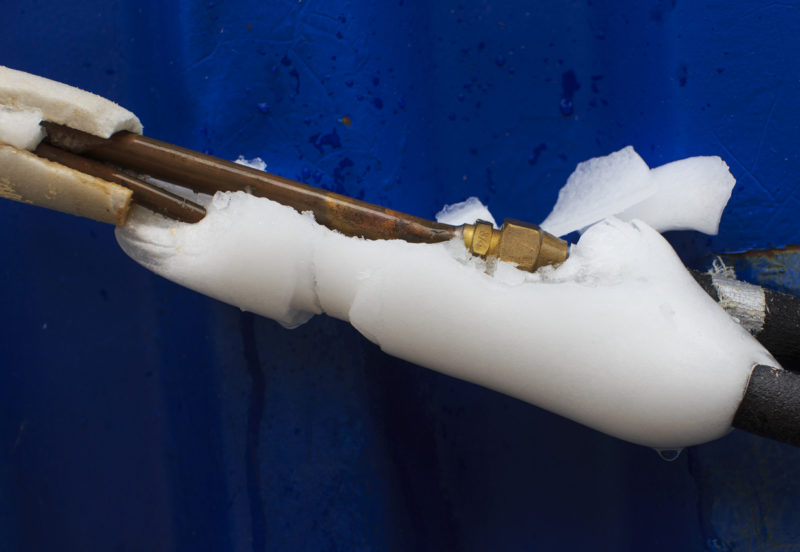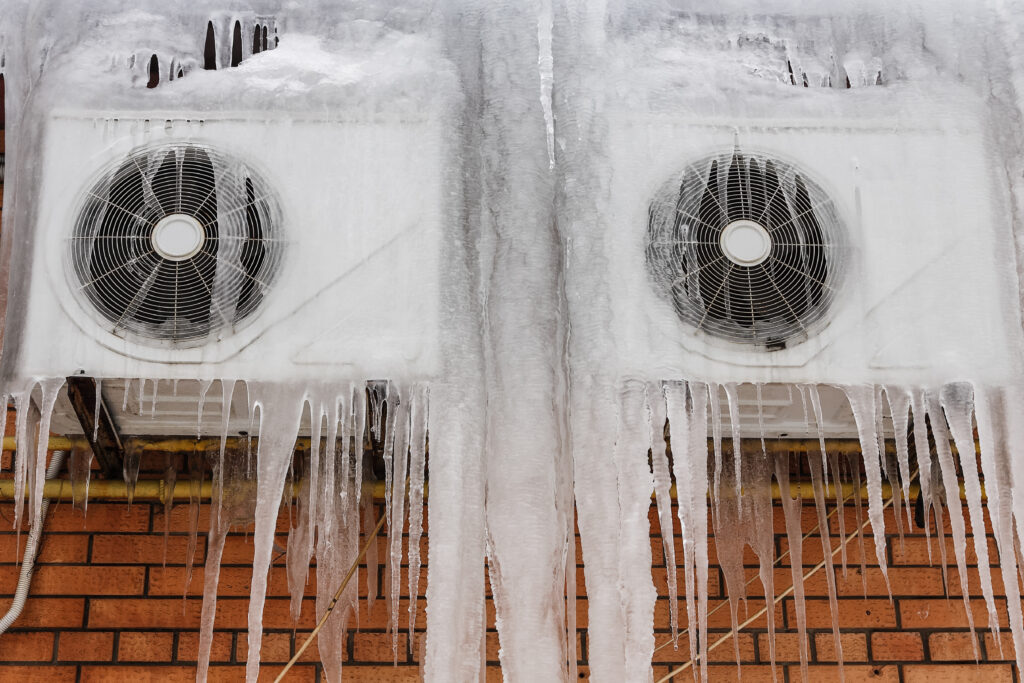My AC Pipe Is Completely Frozen - What Should I Do? Guidance for Remedy
My AC Pipe Is Completely Frozen - What Should I Do? Guidance for Remedy
Blog Article
The publisher is making a few good pointers regarding Why Is Ice On My Outside Air Conditione in general in the article in the next paragraphs.

Intro
Uncovering that your air conditioning pipeline is frozen can be worrying, particularly during warm summer months when you rely on your a/c the most. Recognizing what to do in such a scenario is important to avoid further damage to your cooling system and ensure your convenience inside.
Comprehending the Causes
Several variables can add to the cold of an a/c pipe. Comprehending these causes can help you attend to the issue properly.
Lack of Airflow
One common root cause of a frozen AC pipeline is inadequate air movement. When the airflow over the evaporator coil is limited, it can trigger the coil to drop below freezing temperature level, bring about ice formation on the pipeline.
Low Refrigerant Levels
Not enough refrigerant levels in your air conditioner system can also result in an icy pipeline. Low refrigerant levels can cause the stress in the system to drop, resulting in the freezing of dampness on the evaporator coil.
Winter Conditions
In colder environments, freezing temperature levels outside can add to the freezing of a/c pipes. If your air conditioner system is not properly insulated or if there are leaks in the ductwork, chilly air can infiltrate the system, triggering the pipeline to ice up.
Dirty Air Filters
Filthy or clogged air filters can restrict airflow in your a/c system, resulting in different issues, including an icy pipe. It's vital to replace or cleanse your air filterings system consistently to guarantee proper air movement and protect against ice buildup.
Indications of a Frozen A/c Pipe
Acknowledging the signs of a frozen AC pipeline is vital for prompt activity.
Lowered Airflow
If you discover a considerable reduction in air flow from your vents, it could show an icy pipe.
Ice Buildup on the Pipe
Visible ice buildup on the cooling agent line or the evaporator coil is a clear indication of an icy a/c pipeline.
Weird Sounds from the Unit
Uncommon audios, such as hissing or gurgling, originating from your air conditioner unit can signify that there's ice existing on the pipe.
Immediate Actions to Take
When confronted with a frozen air conditioner pipeline, it's necessary to act quickly to stop further damage to your air conditioning system.
Turning off the a/c
The initial step is to switch off your a/c to stop the system from running and aggravating the issue.
Looking for Blockages
Inspect the area around the indoor system for any kind of blockages that might be obstructing airflow, such as furnishings or curtains.
Defrosting the Pipe
You can make use of gentle techniques like placing towels soaked in warm water around the frozen pipe to aid thaw it gradually.
Preventive Measures
Taking preventive measures can aid stay clear of future events of an icy air conditioner pipe.
When DIY Methods Fail
If your attempts to thaw the pipeline or address other issues are unsuccessful, it's time to call a specialist.
Significance of Hiring a Professional HVAC Technician
A licensed HVAC professional has the proficiency and devices necessary to detect and repair problems with your air conditioner system securely and properly.
Normal Maintenance Checks
Set up normal maintenance contact an expert HVAC technician to make sure that your air conditioner system is running effectively.
Changing Air Filters
Routinely change or clean your air filters to avoid air flow constraints and maintain optimum performance.
Insulating Exposed Pipes
If your air conditioning pipes are subjected to cool temperatures, think about protecting them to avoid cold throughout cold weather.
Looking For Professional Help
If DIY techniques fall short to settle the problem or if you're unclear concerning how to continue, it's ideal to seek aid from a qualified HVAC service technician.
Conclusion
Handling a frozen air conditioning pipeline can be a frustrating experience, however understanding exactly how to react can assist minimize damage and recover convenience to your home. By understanding the reasons, identifying the indications, and taking punctual action, you can properly resolve the issue and prevent future events.
Frozen AC Line: Why It Happens & What To Do About It
A frozen AC line can be a rather peculiar sight in a place like Phoenix, Arizona where nothing ever freezes. In this post, we’ll discuss what makes an air conditioner line frozen – and what you can do about it.
Dirty Air Filters
Did you know that you should be cleaning or replacing your air filters on a monthly basis? Failing to do this can result in airflow issues that, in turn, cause your evaporator coils and lines to freeze over. You’ll notice a buildup of ice on both components, although the buildup on your pipes will, of course, be more evident unless you open your air condition up to reveal the coils.
What To Do About It
Give your air filter a good cleaning if it’s reusable. If not, replace the filter outright. Next, switch your air conditioner’s fan setting on and leave it there for 2-3 hours. This will draw warm air in, helping to thaw your evaporator coil. You can also check out this article for some tips on cleaning the coils themselves if you’d like to speed the process up. Before you switch the unit back to its normal state, make sure the supply vents are completely unobstructed and free of dust or other debris.
If you keep having this issue even after replacing your filters regularly, contact a local HVAC repair company and have them inspect your evaporator coil, ductwork, and any other components that may be at fault. If you live in the Phoenix, Arizona area, give American Home Water and Air a call.
Low Refrigerant Levels/Leakage
What To Do About It
Contrary to what air conditioner “recharge” companies often tell their clients about refrigerant, it should never need to be simply refilled. You see, refrigerant runs in what experts refer to as a “closed loop.” Refrigerant really shouldn’t be leaving that loop. If it is, you’ve got a leak.
Paying someone to come and pump more refrigerant into your system (aka “recharge” it) isn’t the solution. Doing that will simply kick the can down the road. Besides, refrigerant leaks can be harmful to the environment and people in your home.
Rather, you need to take care of the leak with the help of a technician. Check out this article for some more information about dealing with air conditioners that are leaking refrigerant. Before you contact a technician, switch your thermostat to the off position. Then, switch the fan setting on and let it run for 2-3 hours so the unit can thaw.
Improper Temperature Setting
Improper temperature settings can also cause a drop in your air conditioner’s pressure. What many people don’t realize is that air conditioners are actually designed to run when temperatures have fallen above roughly 60 degrees Fahrenheit. If you run the unit when it’s cold outside, you’ll run into many issues, including frozen components.

Hopefully you liked our section about What Causes AC Pipes To Freeze?. Thanks a lot for finding the time to read through our article post. Please take the opportunity to distribute this blog posting if you enjoyed reading it. Thank you for taking the time to read it.
Order Repair Report this page